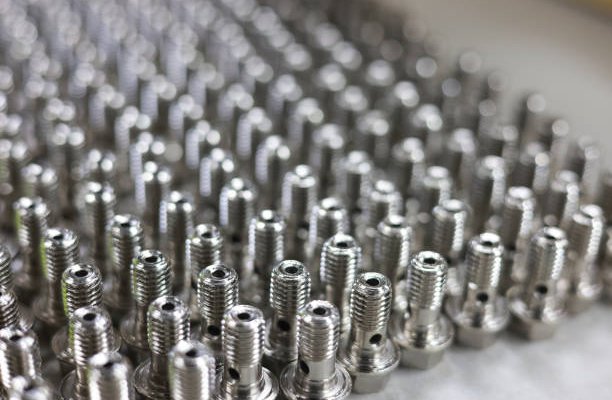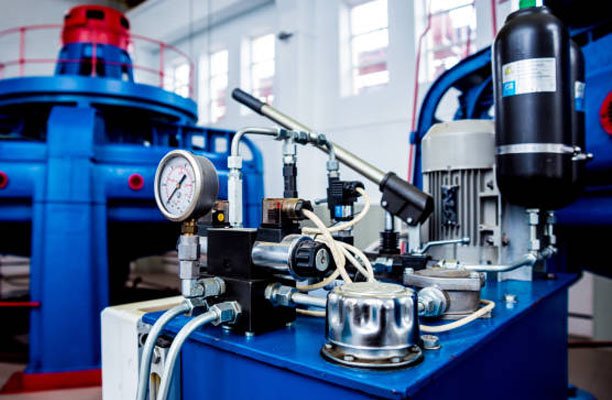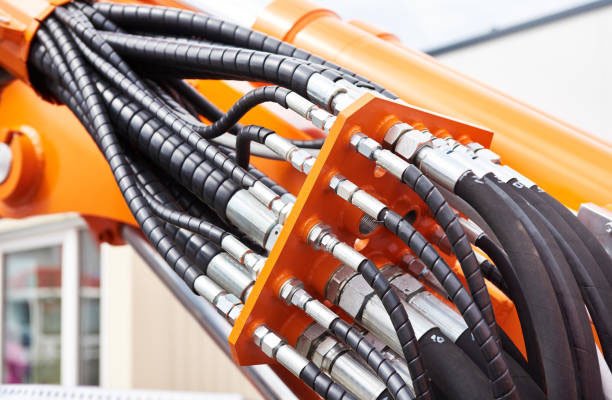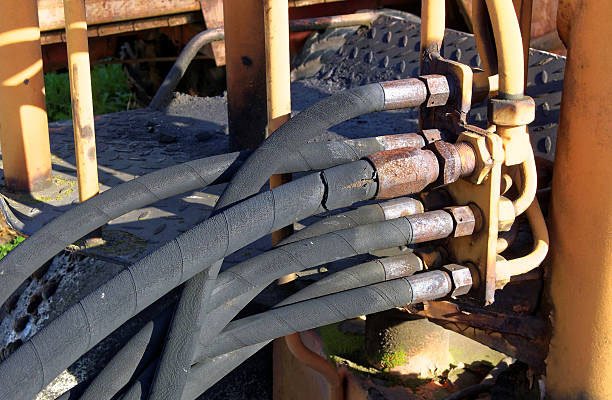Introduction
In the world of industrial machinery and fluid power systems, hydraulic hoses play a crucial role in transferring pressurized fluids to power equipment. One critical component in this system is the hydraulic hose fitting, which ensures secure connections and leak-proof operation. Among various fitting options available, reusable hydraulic hose fittings have gained substantial attention for their economic and environmental benefits.
As industries increasingly shift toward sustainability and cost-efficiency, reusable fittings, therefore, provide a compelling alternative to single-use or crimped fittings. In this guide, we’ll explore everything you need to know about reusable hydraulic hose fittings—starting with what they are and moving on to how they help reduce both costs and environmental impact.
What Are Hydraulic Hose Fittings?
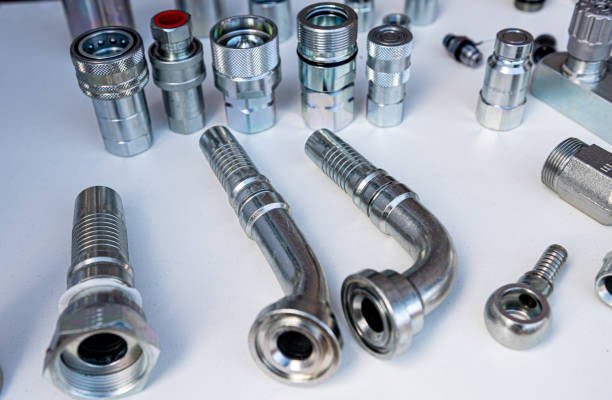
Hydraulic hose fittings are connectors that secure the ends of a hydraulic hose to pumps, valves, cylinders, and other components within a hydraulic system. Their primary role is to ensure a leak-proof seal and enable efficient fluid transfer under high pressure.
Hydraulic hose fittings are typically manufactured from robust materials designed to withstand extreme pressure and environmental conditions. Common materials include:
- Carbon Steel: Offers excellent strength and cost-efficiency, suitable for general-purpose applications.
- Stainless Steel: Provides superior corrosion resistance, making it ideal for marine and high-moisture environments.
- Brass: Known for good corrosion resistance and ease of installation, used in low to moderate pressure applications.
There are two main categories of hydraulic hose fittings:
- Crimped Fittings: Require specialized crimping equipment to install, providing a permanent, tamper-proof connection.
- Reusable Fittings: Can be disassembled and reassembled, allowing for repeated use without sacrificing integrity.
Understanding Reusable Hydraulic Hose Fittings
Reusable hydraulic hose fittings are designed to be installed without crimping machinery, making them particularly useful for field repairs and maintenance tasks. These fittings consist of two main components:
- The Socket: This part threads onto the outer cover of the hose, gripping it tightly without causing damage.
- The Insert (or Nipple): This is inserted into the hose inner tube and secured by the socket to create a tight seal.
Unlike crimped fittings that require expensive equipment and are intended for one-time use, reusable fittings can be removed and reinstalled multiple times, offering flexibility and reducing long-term costs. They are especially valuable in remote locations where access to crimping tools may be limited.
The installation process is relatively straightforward, though it must be performed with care to ensure proper sealing and hose integrity. Reusable fittings are compatible with a range of hose types, particularly textile-braided and wire-reinforced hoses that support field-serviceability.
Key Advantages of Reusable Hydraulic Hose Fittings
The shift toward reusable hydraulic hose fittings is driven by a combination of practical, economic, and environmental benefits. As a result, many operations are turning to these fittings. Below are the most compelling advantages that, collectively, make them a smart and sustainable choice.
1. Cost-Effectiveness
One of the most appealing features of reusable fittings is their ability to significantly reduce long-term maintenance and replacement costs. While the initial investment might be slightly higher than that of crimped fittings, reusable options pay for themselves over time through reusability and ease of field repairs.
- No need for expensive crimping equipment
- Lower downtime due to quick on-site repairs
- Reduced need for inventory stocking of one-time-use fittings
2. Environmental Sustainability
Reusable fittings align well with modern sustainability initiatives. Because they are designed to be used multiple times, they help reduce metal waste and decrease the demand for raw material extraction and manufacturing.
- Lower carbon footprint compared to disposable fittings
- Reduction in landfill waste from failed or discarded fittings
- Support for circular economy principles in hydraulic systems
3. Ease of Maintenance and Repair
With no specialized tools required for installation or removal, reusable fittings simplify the maintenance process. Technicians can easily replace or refit hoses in the field without needing to transport heavy machinery or wait for part deliveries.
- Faster repair turnaround times
- Minimal training required for proper installation
- Ideal for remote locations or mobile equipment
Applications of Reusable Fittings Across Industries
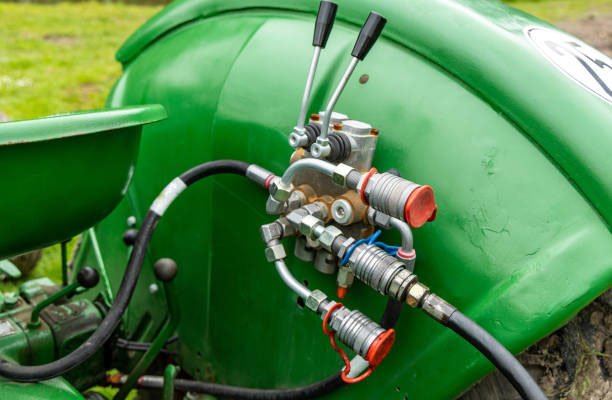
Reusable hydraulic hose fittings are incredibly versatile and are used across a wide array of industries where hydraulic systems are essential. Below are some of the most common applications:
Agriculture
Farm machinery such as tractors, harvesters, and irrigation systems often operate in remote fields where quick repair solutions are critical. Reusable fittings allow farmers and technicians to repair hydraulic lines without waiting for a crimper or new parts.
Construction
Construction equipment like excavators, bulldozers, and loaders often face intense workloads and harsh environmental conditions. Consequently, reusable fittings are valuable because they support on-the-spot hose replacement, thereby minimizing machine downtime on busy job sites.
Manufacturing
Automated machinery in manufacturing plants rely on consistent hydraulic pressure. Reusable fittings help maintenance teams rapidly swap hoses during preventative maintenance or emergency repairs.
Automotive
In the automotive repair and customization industry, reusable fittings provide flexible solutions for assembling and reconfiguring hydraulic systems such as brake lines or power steering systems.
Choosing the Right Reusable Hydraulic Hose Fitting
Selecting the right fitting is essential to ensure safety, performance, and longevity of your hydraulic system. Here are the most important factors to consider when choosing reusable hydraulic hose fittings:
Hose Compatibility and Sizing
Always match the fitting to the correct hose size. Incompatible sizes can lead to leaks, hose damage, or complete system failure. Most manufacturers provide sizing charts and cross-reference tools to help with accurate selection.
Pressure Ratings
Each hydraulic fitting is rated for a maximum operating pressure. Ensure that the selected fitting can handle the pressure requirements of your system. Exceeding the rating can result in dangerous blowouts or failures.
Material Selection
Material choice should be based on the application environment:
- Stainless Steel: Excellent for marine, food-grade, or corrosive environments
- Brass: Suitable for moderate pressure systems and non-corrosive fluids
- Steel: Ideal for high-pressure industrial applications
Always consult with the manufacturer or a qualified hydraulic technician to ensure compatibility with your specific application.
Installation Guide for Reusable Hydraulic Hose Fittings
Installing reusable hydraulic hose fittings is a practical skill that can be quickly mastered with the right tools and technique. This process allows for efficient field repairs and assembly without specialized crimping equipment.
Tools Required
- Bench vise or clamp (optional but recommended)
- Wrenches (usually two, for socket and insert)
- Lubricant (non-petroleum-based is often preferred)
- Cutting tool (for preparing hose ends)
Step-by-Step Assembly Process
- Cut the hose cleanly and squarely using an appropriate cutting tool.
- Insert the socket onto the hose and screw it on counter-clockwise until the hose bottoms out inside the socket.
- Apply a small amount of lubricant to the insert to ease installation and reduce friction.
- Insert the fitting nipple into the hose while holding the socket steady, threading it clockwise until fully seated.
- Use wrenches to tighten the insert against the socket. Be careful not to overtighten as this may damage the hose or threads.
Common Mistakes to Avoid
- Incorrect Hose Size: Always verify that the hose and fitting are compatible.
- Improper Cutting: A frayed or angled cut can compromise the seal.
- Overtightening: This can lead to cracking or distortion of the fitting components.
Maintenance Tips to Prolong Hose and Fitting Life
Proper maintenance of both the hydraulic hose and its reusable fittings can significantly extend the lifespan of your system and prevent costly downtime.
Regular Inspection
Inspect hoses and fittings on a regular schedule—daily in high-use systems, weekly or monthly in moderate-use environments. Look for signs of wear, leaks, rust, or misalignment.
Cleaning and Lubrication
- Wipe fittings with a clean cloth to remove debris and contaminants.
- Use a mild, non-corrosive solvent to clean fittings, avoiding harsh chemicals that degrade material integrity.
- Lubricate moving parts during reassembly to ensure a secure and non-damaging fit.
Storage Recommendations
Store hoses and reusable fittings in a cool, dry environment away from direct sunlight and harsh chemicals. Coil hoses loosely to prevent kinks and strain at the joints.
Environmental Benefits and Sustainability
Reusable hydraulic hose fittings are more than just a convenience—they are a strategic choice for organizations aiming to improve their environmental footprint.
Reduction in Metal Waste
Traditional crimped fittings are discarded after use, adding to industrial waste streams. Reusable fittings, on the other hand, are re-installed multiple times, dramatically reducing the volume of waste generated.
Lower Energy Usage in Production
Reusable fittings reduce demand for new fittings manufacturing, thereby lowering energy consumption and greenhouse gas emissions associated with mining, smelting, and fabrication.
Lifecycle Comparison with Crimped Fittings
Over a 10-year lifecycle, reusable fittings can offer significant reductions in:
- Material input
- Transportation-related emissions
- Waste management costs
This makes them a clear choice for companies with ESG (Environmental, Social, Governance) goals and sustainability mandates.
Economic Considerations
When evaluating reusable hydraulic hose fittings, it’s crucial to look beyond the upfront cost and examine the broader economic implications. Over time, these fittings often prove to be the more financially sound choice.
Initial vs Long-Term Costs
While reusable fittings can have a slightly higher unit price than crimped alternatives, they eliminate the need for costly crimping equipment and reduce the frequency of full hose replacements. This leads to significant savings over the product lifecycle.
- Elimination of machine costs for crimping
- Lower inventory requirements for emergency parts
- Savings from reusing the same fitting multiple times
ROI Calculation
To estimate return on investment (ROI), businesses can factor in:
- Cost of replacement fittings and hoses over time
- Downtime costs due to equipment failure
- Labor costs for installation and repairs
Many operations report ROI within the first year of switching to reusable fittings, particularly in high-maintenance environments like agriculture and heavy equipment repair.
Case Studies on Cost Savings
For example, a mid-size agricultural contractor in Iowa reported saving over $15,000 annually after transitioning 80% of their hydraulic systems to reusable fittings. Similarly, a construction company in Texas reduced their hydraulic downtime by 30% thanks to field repair capabilities.
Common Myths About Reusable Hydraulic Fittings
Despite their proven effectiveness, several misconceptions continue to circulate about reusable fittings. It’s important to dispel these myths to help more users make informed decisions.
Myth: They Are Less Durable
Reusable fittings, when installed correctly, are just as durable as crimped versions. In fact, many are rated to handle the same pressure and temperature ranges as their one-time-use counterparts.
Myth: Complex Installation
Installation does not require special training or tools. With a few wrenches and proper technique, even novice technicians can secure leak-free connections.
Myth: Not Suitable for High-Pressure Systems
While not all reusable fittings are designed for extreme pressures, many models are rated for use in high-pressure environments. Always verify specifications, but don’t assume crimped equals stronger.
Safety Considerations and Best Practices
As with all hydraulic components, safety is paramount. Proper installation, usage, and maintenance of reusable hydraulic hose fittings can prevent accidents, system failures, and costly repairs.
Pressure Ratings and System Integrity
Ensure the fitting is rated for your system’s maximum pressure. Overloading a fitting can result in catastrophic failure, risking injury and equipment damage. Regular pressure testing and adherence to manufacturer specs are essential.
Certifications and Compliance Standards
Look for fittings certified by industry organizations such as:
- SAE (Society of Automotive Engineers)
- ISO (International Organization for Standardization)
- RoHS (Restriction of Hazardous Substances)
These certifications indicate that fittings meet global standards for performance and safety.
Worker Training
Provide ongoing training for employees working with hydraulic systems. Focus on correct fitting identification, installation techniques, and emergency response protocols in case of failure.
Innovations and Future Trends
The hydraulic fittings industry is evolving rapidly, with new technologies enhancing the performance, convenience, and intelligence of reusable systems. Staying ahead of these trends can give businesses a competitive edge.
Smart Fittings and Monitoring
Some manufacturers are developing reusable fittings with built-in sensors for real-time pressure, temperature, and leak detection. These IoT-enabled components improve predictive maintenance and reduce unplanned downtime.
Improved Sealing Technologies
Advancements in elastomeric and polymer seals are increasing the pressure-handling capacity and longevity of reusable fittings, even under severe conditions.
Market Projections
The reusable hydraulic fittings market is expected to grow at a CAGR of over 5% in the next decade, driven by increased adoption in heavy machinery, agriculture, and green manufacturing sectors.
Top Manufacturers and Brands
Choosing a reliable brand ensures product quality, availability of replacements, and customer support. Below are some of the leading names in the reusable fittings space:
- Parker Hannifin: Industry leader with a wide range of high-performance reusable fittings.
- Gates Corporation: Known for innovative hose and fitting solutions, including reusable assemblies.
- Eaton Hydraulics: Offers durable, high-pressure reusable fittings for industrial use.
- Dayco, Ryco, and others: Trusted regional and specialized brands with strong reputations in specific markets.
Buying Guide: Where and How to Purchase
Purchasing reusable hydraulic hose fittings requires consideration of both product quality and supplier reliability.
Online vs Local Suppliers
- Online: Provides broad selection, detailed product specs, and often better pricing.
- Local Distributors: Offer personalized service, faster delivery, and on-site technical support.
What to Look for in a Supplier
- ISO and SAE-certified products
- Clear warranty and return policies
- Availability of technical documentation
- Responsive customer support
Tips for Bulk Buying
- Request samples before committing to large orders
- Negotiate pricing for recurring orders
- Ensure compatibility across your hydraulic systems
Final Thoughts
Reusable hydraulic hose fittings represent a significant advancement in hydraulic technology, offering cost savings, environmental benefits, and operational flexibility. Whether you’re managing a large industrial operation or maintaining equipment in the field, adopting reusable fittings is a smart investment that aligns with both economic and sustainable goals.
By choosing the right fittings, following best practices for installation and maintenance, and staying updated on industry innovations, businesses can maximize the performance and lifespan of their hydraulic systems.
Ready to make your hydraulic systems more sustainable and efficient? Start using reusable hydraulic fittings today and experience the difference.
FAQs
1. Are reusable hydraulic hose fittings safe for high-pressure applications?
Yes, many reusable fittings are designed and rated for high-pressure environments. Always check the manufacturer’s specifications to ensure compatibility with your system.
2. How many times can I reuse a hydraulic fitting?
With proper care, reusable fittings can be used multiple times. However, always inspect for wear or thread damage before reuse to ensure a safe seal.
3. Do reusable fittings require any special tools?
No special crimping tools are required. Most installations can be performed using basic hand tools like wrenches and vises.
4. Can I mix reusable fittings with crimped fittings in the same system?
Yes, but it’s essential to ensure that all components are pressure-rated and compatible. Consistency in material and connection standards is key to safe operation.
5. Where can I buy quality reusable hydraulic hose fittings?
Leading brands like Parker, Gates, and Eaton sell through both online retailers and authorized local distributors. Always verify certifications and product specs before purchasing.


